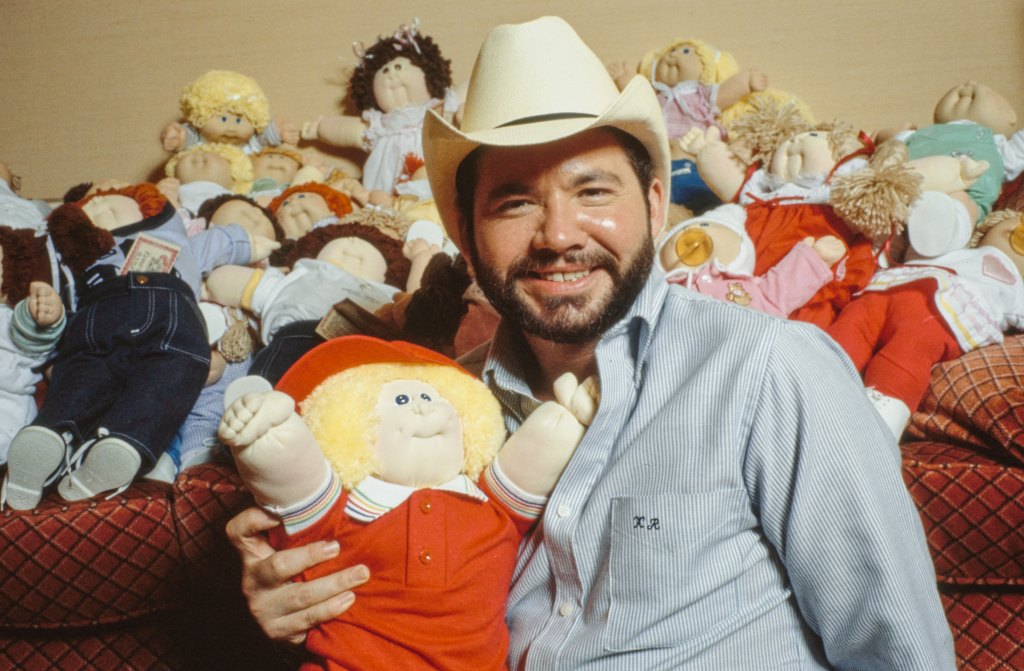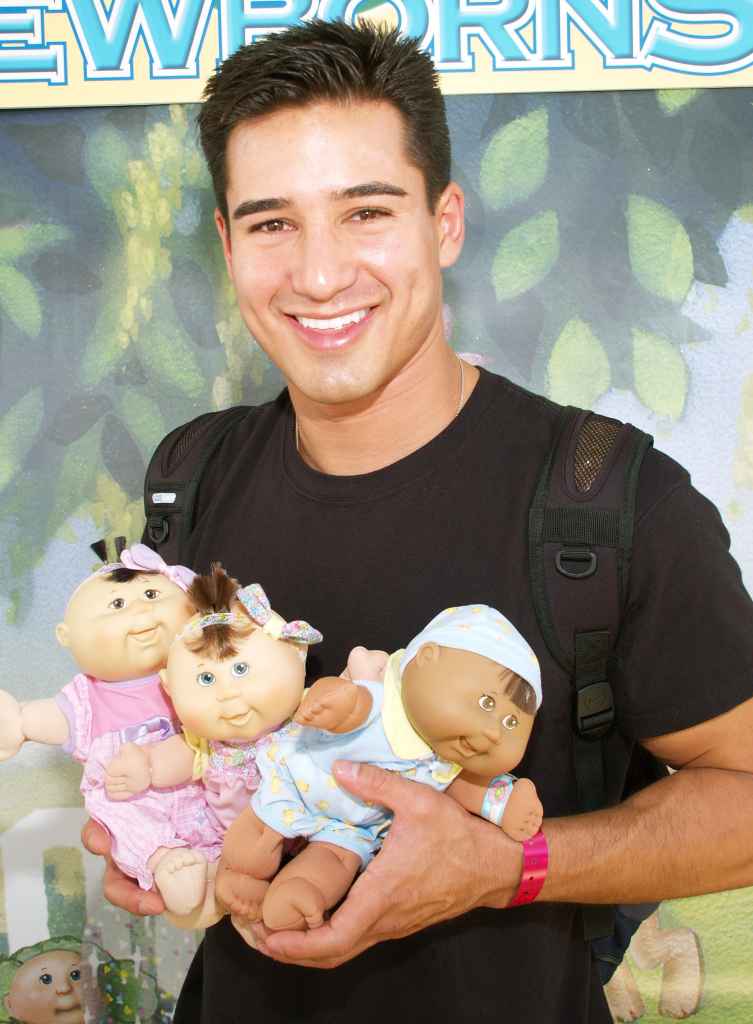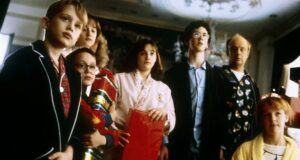The 1980s, like every decade before and after it, were filled with fads that captured the imaginations of people and resulted in some pretty big cultural icons. That 10-year period gave us everything from the Care Bears to the California Raisins, Garbage Pail Kids, Smurfs and Pac-Man. And then, of course, there was the Cabbage Patch Kids, those dolls with the unique look that convinced consumers that they weren’t buying them, but instead were actually adopting the Kids and making them part of the family. It may sound like a crazy concept today, but back then? People couldn’t get enough of them and their popularity is still fairly widespread.
“I think the appeal is that Cabbage Patch Kids have become a part of people’s families,” Margaret McLean, director of communications at Cabbage Patch headquarters told accessnorthga.com in 2008. “When a whole family gets together to try and find a Cabbage Patch Kid for Christmas, they’re all working together and sacrificing a lot. They become family history.”
In the following timeline, you can trace the history of the Cabbage Patch Kids over the past 40 years.
1976: Xavier Roberts Creates ‘Little People’ Dolls

Inspired by Appalachian quilting and German soft-sculpture techniques, Georgia art student Xavier Roberts came up with the concept of “Little People” dolls. The technique he used, called “needle molding,” allowed him to shape the dolls’ faces and allowed for each to have their own unique look. Initially, he sold the dolls at arts and crafts shows, almost immediately connecting with people.
1978: BabyLand General Hospital Opens
Roberts’ innovations continued when he came up with the idea for “BabyLand General Hospital” in Cleveland, Georgia, which would not only be a showroom for the Little People dolls but as an adoption center of sorts. His brilliant selling point was not just that people would buy his dolls, but rather they would be adopting them (to the point where they would even get adoption papers and birth certificates). DrivingReally driving home the point, he had the setting designed to look like a hospital nursery, while salespeople — dressed as nurses — helped customers navigate the so-called adoption process.
1982: A Partnership deal is struck with Coleco
A step towards the big time came when Roberts through Original Appalachian Artworks was approached by, and signed a deal with the toy manufacturer Coleco, which recognized the potential in LittlePeople and offered him the opportunity to see his creation mass-produced. The line’s name was changed to Cabbage Patch Kids (given that Fisher-Price was already selling their own Little People toy line) and they obviously shifted away from the hand-made approach and shifted to mass-market Cabbage Patch Kids. Uniqueness was maintained in that each of the dolls would have its own hair, eye color and outfits.
1983: Cabbage Patchmania!
Like most fads, the Cabbage Patch Kids became an instant phenomenon and by Christmas 1983, there was a national craze for the doll. In fact, there were actually frenzies surrounding the obtaining of one of them, which became known as the “Cabbage Patch Riots.” Everybody wanted their own Cabbage Patch Kid.
1984: Toy of the Year
The Toy Industry Association named the Cabbage Patch Kids Toy of the Year in 1984 due to the line having sold over 20 million units and generated over $2 billion in retail sales across North America, Europe, Australia, New Zealand and Japan.
1985
From Earth to the stars
Here’s another precedent for the Cabbage Patch Kids: one of them was brought aboard the Discovery space shuttle and became the first doll in space — which did nothing to hurt sales.
Seeking more room
So popular had the Cabbage Patch Kids become by 1985, that the BabyLand General Hospital had to find a larger location in Georgia to handle the influx of families looking to “adopt” one of the dolls. Nearly 30 years later — in 2015— there would be a need to expand again.
1988: Coleco’s Bankruptcy
Coleco was forced to file for bankruptcy in 1988 due to legal battles waged against Xavier Roberts for what they felt was competition in the form of the hillbilly Furskins Bears collection. Seeing an opening, Hasbro picked up the license and immediately made plans to create different versions of the Cabbage Patch Kids as well as new product lines.
1989: A New Direction
Once Hasbro took over the Cabbage Patch Kids, they began manufacturing smaller versions — in addition to the standard size — that would be more affordable.
1992: Animatronic Cabbage Patch Kids
The Cabbage Patch Kids took on a new dimension when Hasbro introduced an animatronic version that would respond to voice commands and have some facial movements. Interactive toys were a trend at the time.
1994: The Cabbage Patch Kids are brought to a new home
Two years after the introduction of the animatronic versions, Mattel was able to acquire the license and elected to go with the idea of collectibles. Like Barbie, the Kids were sold with different themes. Additionally, there were “Kids on the Go” versions, for which there were fun, more active costumes such as for skaters and bikers.
1996: 20th Anniversary Kids
Time certainly flies and by 1996 it was already the 20th anniversary of the Cabbage Patch Kids. To celebrate, Mattel issued a line of designs that were based on the style originally introduced by Coleco. Nostalgia enthusiasts turned these into collector’s items.
1999: Cabbage Patch Kids on QVC
A whole new audience was reached when limited edition versions of the Kids were sold over the air via QVC. This also had the effect of attracting adult collectors.
2003: The brand is revived once again

Production of the Cabbage Patch Kids was taken over by Play Along Toys in 2003, which resulted in new designs and packaging. To celebrate the 20th anniversary of the original dolls, both new and classic designs were introduced.
2006: 30th Anniversary Celebration
For the 30th anniversary, Play Along Toys released special-edition versions, some styled after the original handmade dolls, others with updated features, continuing what had clearly become a traditional approach.
2011: JAKKS Pacific Gets Involved
Play Along Toys was acquired by JAKKS Pacific in 2011, with Jakks introducing a line of 14-inch Cabbage Patch Kids under a “Fashionality” line.
2013 : Inducted Into the National Toy Hall of Fame
Recognizing their cultural impact and influence on the toy industry, the Cabbage Patch Kids were inducted into the National Toy Hall of Fame in 2013.
2015: Things get Wicked
By 2015, Jakks Pacific relinquished the rights to the Cabbage Patch Kids and Wicked Cool Toys picked up the license. Their approach was to keep the adoption process (which was deemed too integral a part of Cabbage Patch Kids history to do away with) and the standard dolls, while also issuing a line of 1.5″ collectible dolls as well as 8-inch plus pets under the name Adoptimals, which a Cabbage Patch Kid could adopt.
2023: 40th Anniversary Celebration
To celebrate the 40th anniversary, special commemorative dolls were released by Wicked Cool Toys, some inspired by the original styles and others featuring new designs. Forty years on, the fascination with the Cabbage Patch Kids continues ever onward.




